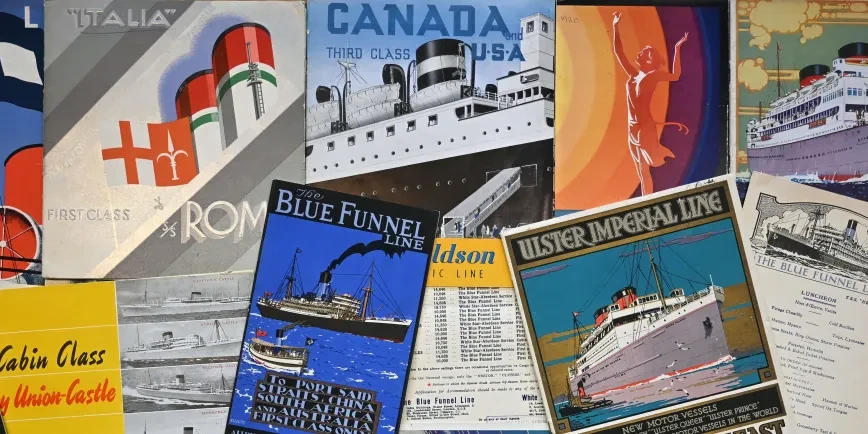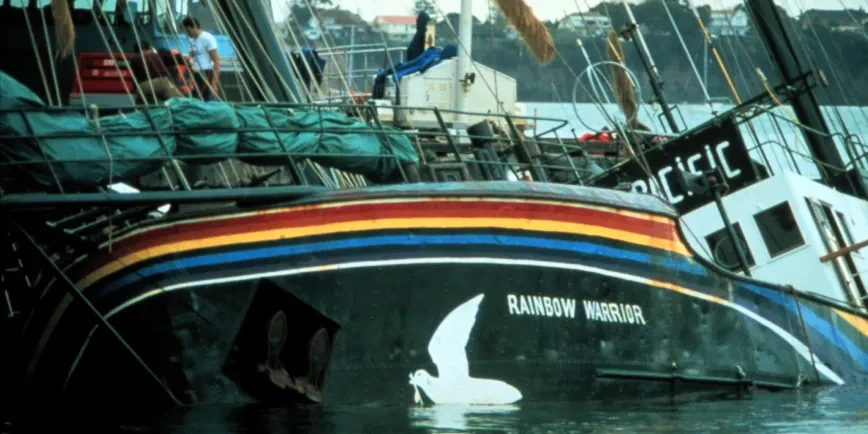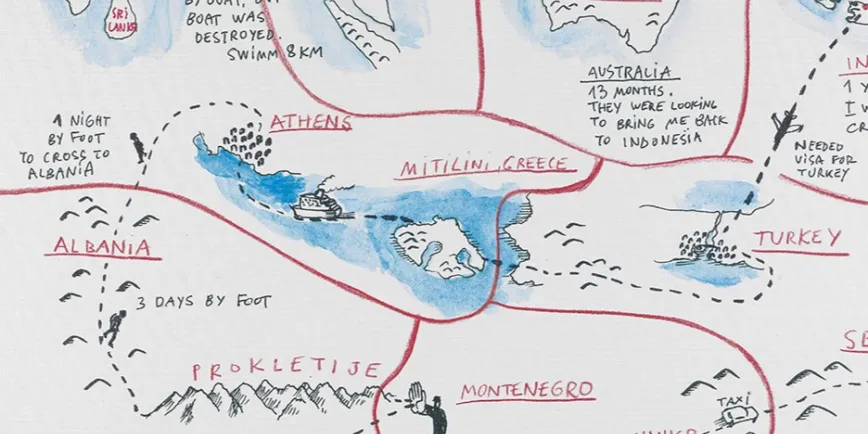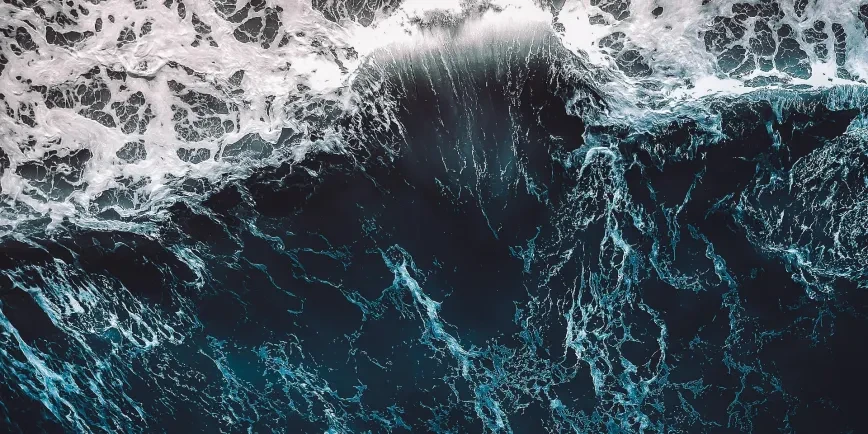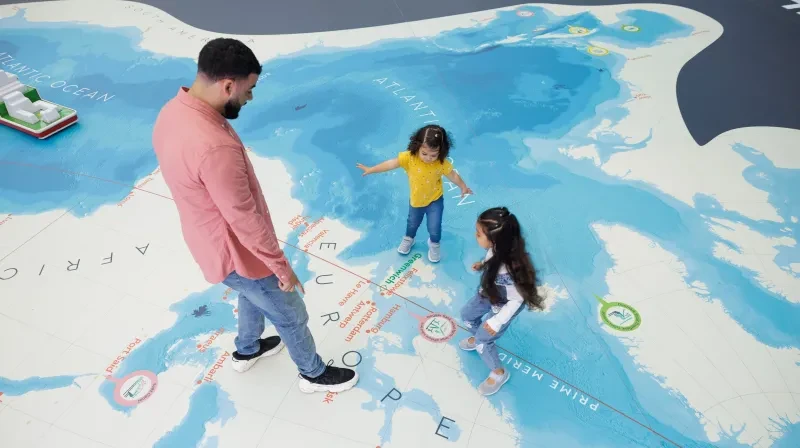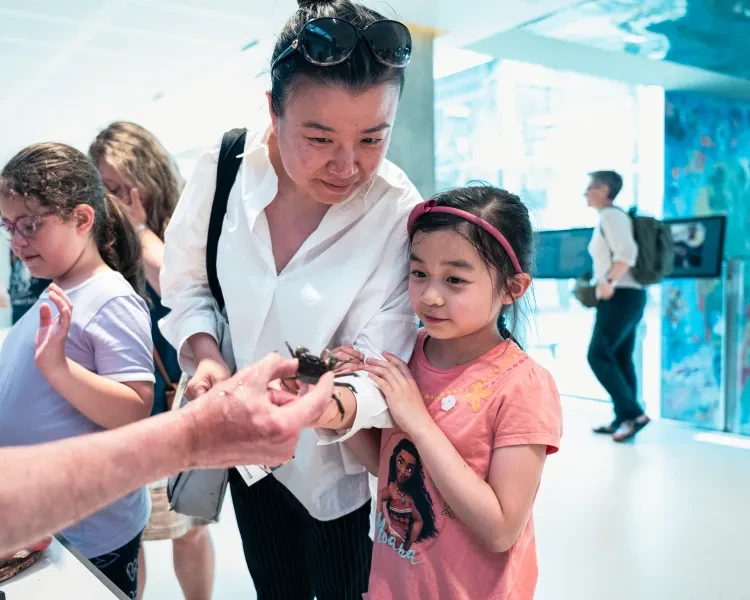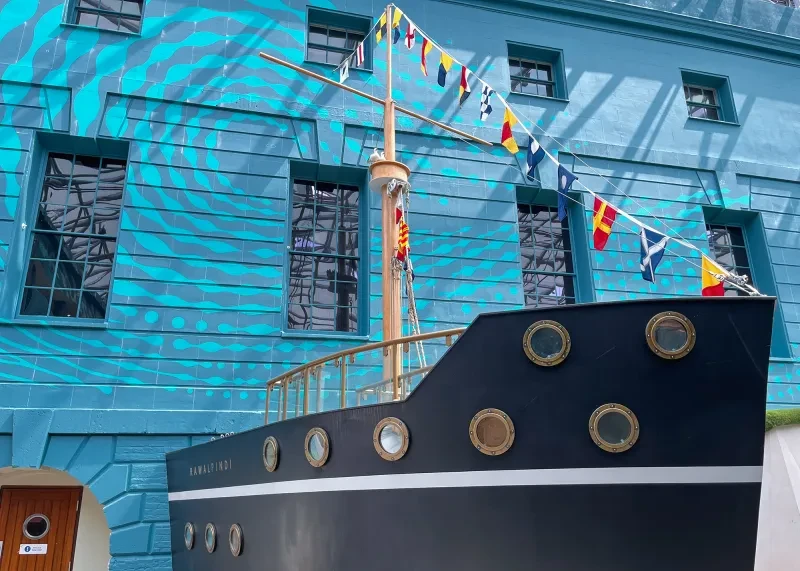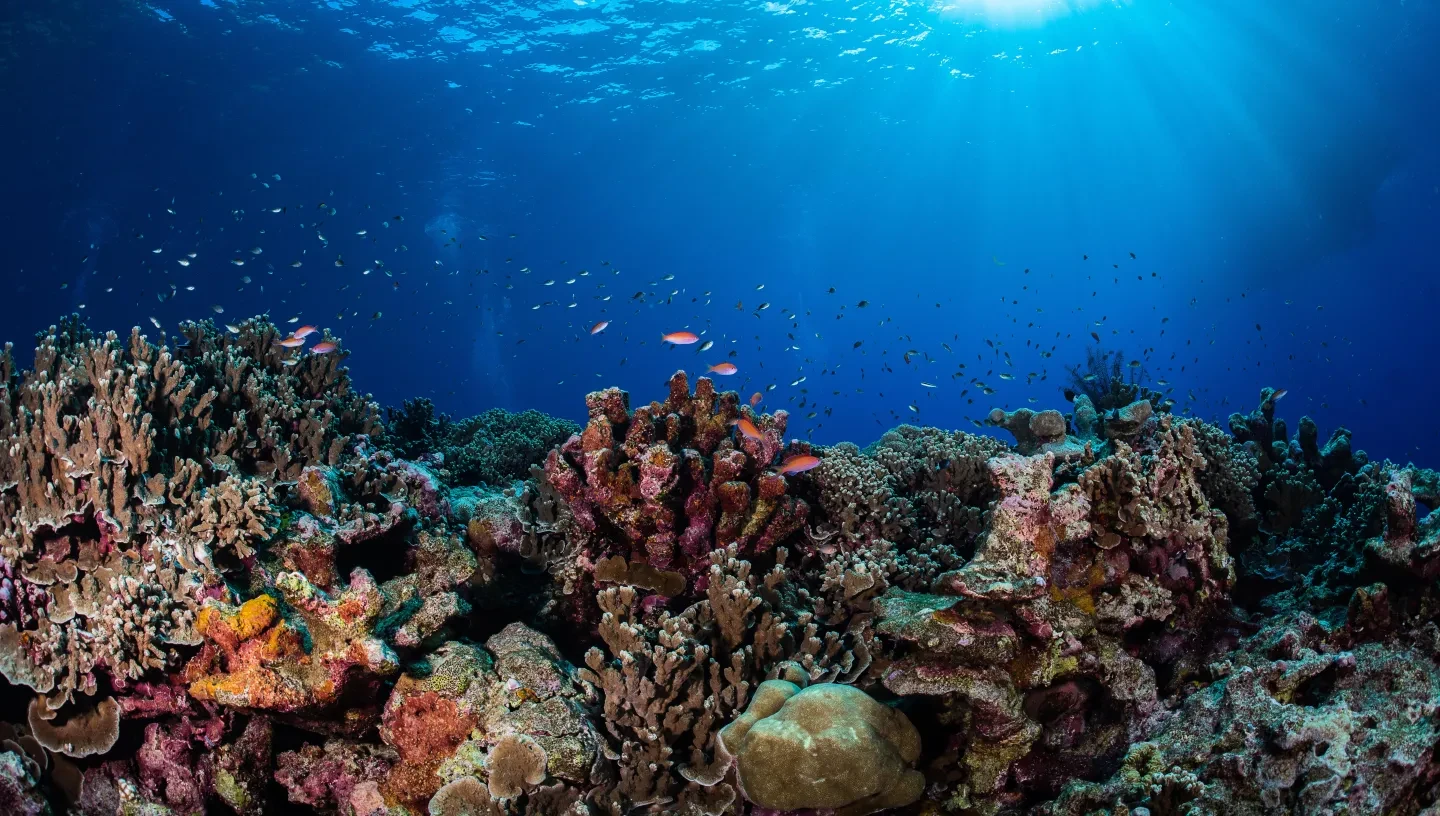
Coral reefs are one of our most iconic habitats, and provide a home for nearly a quarter of known marine species. But what actually is coral made of?
From reef locations to coral formation, discover more about these important ecosystems and the threats corals face with the National Maritime Museum.
What is coral?
Corals are in fact animals.
Corals, while having the appearance of vibrant rocky outcrops, are animals most closely related to jellyfish.
Corals are formed by multiple small, soft organisms known as polyps. They secrete a rocky chalk-like (calcium carbonate) exoskeleton around themselves for protection. Over many years (hundreds in some cases), this process produces complex structures that can measure multiple metres in length.
Coral reef live stream
The Coral City Camera is an underwater camera streaming live from an urban coral reef in Miami, Florida
What do corals eat?
Most corals are reliant on photosynthesis (the same process used by plants to make energy from sunlight) for their energy.
However, the corals are not able to photosynthesise themselves. Instead, microscopic algae known as zooxanthellae live within the coral’s protective exoskeleton.
In return for protection from grazing marine species, the algae share the products of their photosynthesis with the coral, providing it with the energy it needs to survive.
This is known as a 'mutualistic symbiosis', as both coral and algae benefit from the relationship. However, this relationship means coral can only survive in warm, shallow waters where photosynthesis can occur. Corals obtain their vibrant colours from the algae living within them.
Where are coral reefs found?
Corals are found in all the world’s oceans but are most prolific in tropical waters, where they create their own unique ecosystem: coral reefs.
The largest coral reef in the world is the Great Barrier Reef. It covers an area of 348,000 square kilometres (about 134,350 square miles), which is about the same size as Italy. See if you can work out where it is on the global Ocean Map at the National Maritime Museum (this type of map may look strange at first glance, but the outline of Australia is actually quite familiar once you see it).
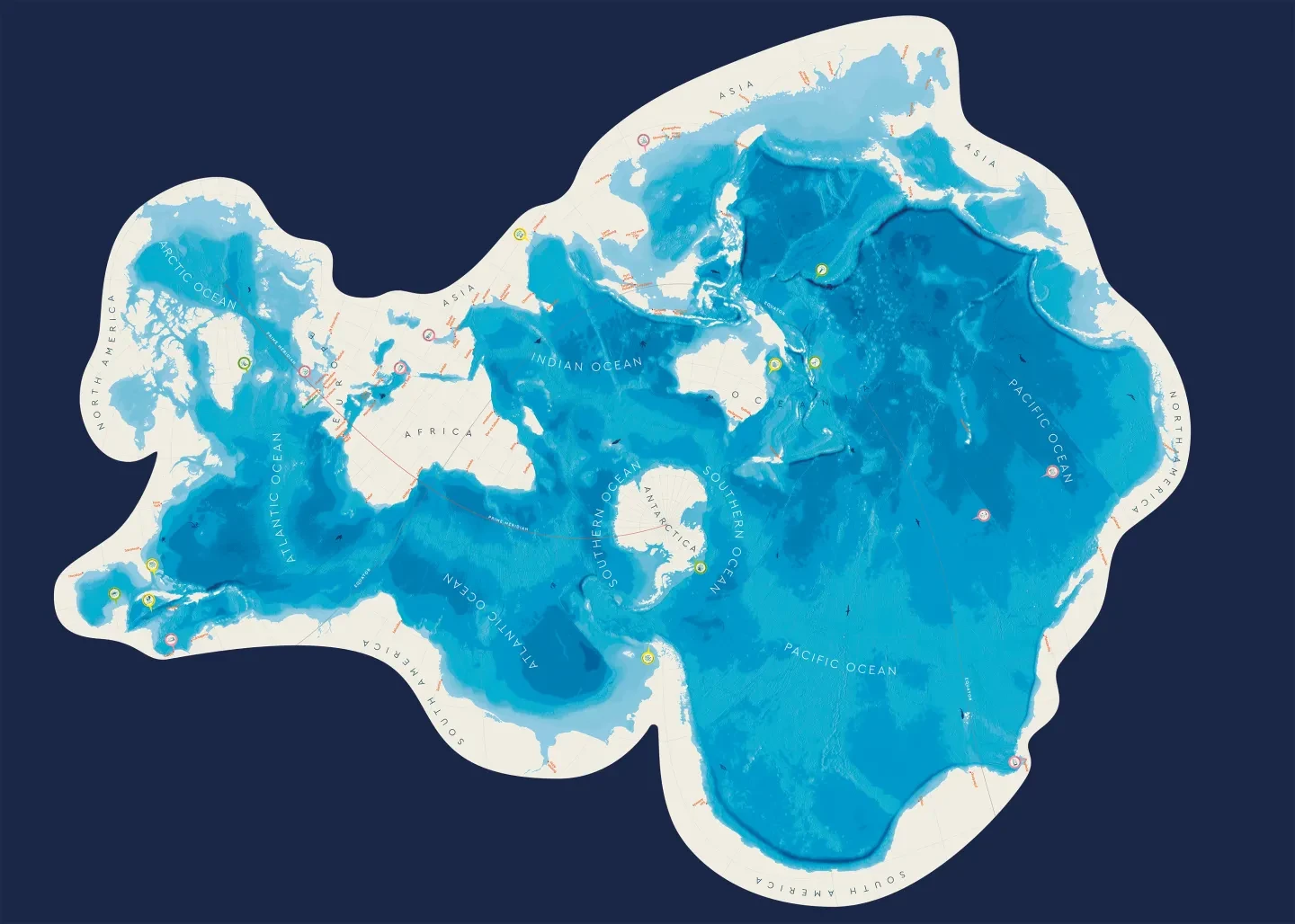
The Great Barrier Reef stretches from the coast to up to 250 kilometres (155 miles) offshore, is one of the most complex and diverse ecosystems on Earth and is a UNESCO World Heritage Site (much like Maritime Greenwich).
Why are coral reefs important?
Coral reefs only occupy 0.1% of the total ocean surface area – but a quarter of known marine life is dependent on them for survival.
This is why coral reefs are often referred to as the 'rainforests of the sea'. From starfish to clownfish and cuttlefish, animals of all shapes and sizes rely on coral reefs for food, shelter and to breed.
Coral reefs also support local communities. A healthy, well-managed reef can provide people with 15 tonnes of seafood per square kilometre per year. Tourism resulting from people wishing to experience these areas of natural beauty supports a series of industries thought to be worth roughly $36 billion per year.
People have always been fascinated by corals, probably due to their lustrous appearance and the teeming life that occupy reefs, akin to an oasis within the harsh ocean.
Red coral, often referred to as precious coral, has been a prized component of fine jewellery or other gifts for hundreds of years.

How does coral contribute to sandy white beaches?
As parrotfish poo! Highly prized white tropical sand is actually made by parrotfish.
The parrotfish eat the coral to get at the polyps and algae it contains. As they can’t digest the hard calcium carbonate shell of the coral, they excrete it.
These colourful fish have some of the strongest teeth in the world – it is estimated that one large parrotfish can produce 450kg of sand per year.
What is coral bleaching?
Bleaching is when corals lose their vibrant colours and become white instead. This is caused by the coral becoming 'stressed' due to changing ocean conditions such as increased water temperature or pollution.
When the coral is stressed the photosynthesising algae leave, meaning the coral loses its main source of food. Look at the diagram below to find out more about coral bleaching.
Our relationship with the sea is changing. Discover how the ocean impacts us – and we impact the ocean – with the National Maritime Museum.
Main image courtesy of Tracey Jennings / Ocean Image Bank







